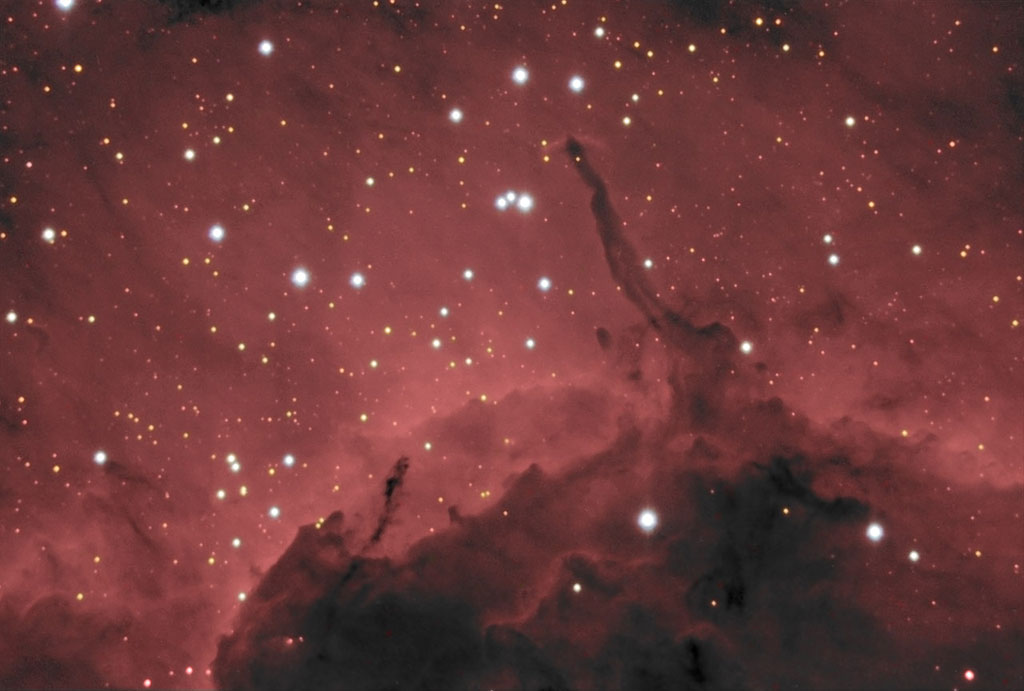Telescope: Celestrion 14 @ F11.4 (3975mm) |
Wikipedia Notes:
Herbig–Haro objects ( HH) are small patches of nebulosityassociated with newly born stars, and are formed when gas ejected by young stars collides with clouds of gas and dust nearby at speeds of several hundred kilometres per second. Herbig–Haro objects are ubiquitous in star-forming regions, and several are often seen around a single star, aligned along its rotational axis.
HH objects are transient phenomena, lasting not more than a few thousand years. They can evolve visibly over quite short timescales as they move rapidly away from their parent star into the gas clouds in interstellar space (the interstellar medium or ISM). Hubble Space Telescopeobservations reveal complex evolution of HH objects over a few years, as parts of them fade while others brighten as they collide with clumpy material in the interstellar medium.
The objects were first observed in the late 19th century by Sherburne Wesley Burnham, but were not recognised as being a distinct type ofemission nebula until the 1940s. The first astronomers to study them in detail were George Herbig and Guillermo Haro, after whom they have been named. Herbig and Haro were working independently on studies of star formation when they first analysed Herbig–Haro objects, and recognised they were a by-product of the star formation process.
|

